It is now the right time to look for new approaches to turn rainbow rice leaves into future foods of well-being, says Professor Dr Apichart Vanavichit, Director, Rice Science Center
Rice is the most consumed caloric food for Thais and most countries in Asia and is deeply rooted in Asian culture. The world population is increasing exponentially to nearly 10 billion people in the year 2050. We will need 56% more caloric foods to feed the future population when, in the next 30 years and beyond, climate change, global warming, and erratic precipitation will limit productivity and acreage of rice production in the rice bowl of Asia and beyond. On the one hand, starvation is inevitable in net food-importing countries if food production is not sustainable.
On the other hand, the modern trend of over-consumption of high caloric foods with less nutrition will increase the risk of getting non-communicable diseases (NCD), including obesity, diabetes, cardiovascular diseases, chronic kidney diseases, in food surplus countries. We need to recreate the future foods to leverage all food resources to prevent double malnutrition in the future generation. To alleviate starvation and slow down NCDs, we have to change our food habits. One approach is to partially replace high caloric starch with low caloric complex carbohydrates and dietary fibre.
Paradigm shift
Then how to produce 56% more rice grains in the next 30 years by minimising agricultural land expansion, environmental pollution, and double malnutrition? We must develop ways to leverage rice biomass for future foods. 1.5 times more than rice grains, rice biomass is often open-burned by farmers to facilitate land preparation. Such practice generates severe air pollution in many large rice-growing countries like India, Indonesia, Thailand, and Vietnam. The toxic air pollutants, including carbon monoxide (CO), PM 10, and PM 2.5 particles causing prolong health problems. We have investigated how to use rice leaves as alternative food sources. Biochemical analysis of rice leaf blades found high dietary fibre (IDF) in a range between 50-70% dry weight. So if at least 10% of high caloric starch is substituted with high fibre leaf, we can save more rice, prevent double malnutrition, minimise air pollution, and increase farmers’ income.
Since 2009, Rice Science Center has implemented roadmaps toward highly efficient, non-GM breeding technologies leading to several new nutrient-rich, eco-friendly rice varieties. One of the ultimate goals is to develop new rice ideotypes where the whole rice plant can be helpful as nutrient-dense foods. For the first time, rice leaf has been specially designed to orchestrate mixed patterns of chlorophyll, anthocyanin, and carotenoids while reducing anti-nutritive factors found in leaf blades. The outcome is five new rice varieties showing eye-catchy rice leaves enriched with antioxidants, micronutrients, proteins, and fatty acids. Rainbow rice leaf blade is a good source of dietary fibre.
Other minor constituents are essential oil, phenolic acid, and ferulic acid. With all of these high nutritious factors, rice leaf still contains less than 1% starch content, the building block of glucose. In contrast to grain components, rice leaf is free of phytic acid, an important anti-nutritive factor binding anionic micronutrients such as P and Fe, making rice leaf a potential super-nutrient, antidiabetic supplement of high caloric foods.
Compared to leafy vegetables, rice leaf can be mass-produced at a low cost. At germination, rice sprout can be blended to make a nutritious drink and therapeutic products. Thirty days before panicle initiation, multiple cuttings can be done without significantly affecting the final grain yield. Such early leaf cutting has been a traditional wisdom among Thai farmers in rainfed rice area to compete with early weeds overgrown. During such vegetative stage, rice leaves can be harvested at 30 and 60 days after transplanted (DAT). High nutritious dietary fibre powder can be produced from the harvested leaves to be used as food ingredients. The pigmented grain is consumed and used for product development. The high fibre powder and whole-grain rice flour can partially replace wheat flour in baking for health-conscious bakery and confectionery products. Finally, dried leaves and straws can be used for feeding and green manure to encourage soil enrichment and avoid open-burning.
Unseen agro-tourism
The colourful rice has brought excitement to a small farm in Ban Xang, Mae Rim Province, Chiangmai, Thailand. Five varieties of Rainbow Rice along with local pigmented rice varieties were artistically hand-transplanted from November 20-April 21. For the first time, a rice field was turned into unprecedented stripes of greeny-white, cherry red, pinky-green, purple, and greeny purple. The agro-touristic farm has become the talk of the town for such unseen colourful rice.
There were 36.7 million online viewers during the quietest tourism period during the COVID19 pandemic in Chiangmai. The 750 in-person visitors created 172,500 THB per hectare of extra income for the farmer. Such earning came from the entrance fee, selling the Rainbow Rice leaves and rice grains. The farmer who grew Rainbow Rice earned approximately 7.6 times more income than selling rice grains alone (22,500 THB/ha). Suppose the Ban Xang Model can be expanded to a scenic rice field in Northern provinces. In that case, we expect to see strong Bio-Circular -Economy impacts on agriculture, agro-tourism, and innovative food for well-being. Rice farmers who generally live-in poverty and underserved could generate an additional income streams from their existing agricultural products.
Acknowledgement
These projects have been supported by the Rockefeller Foundation (Grant No. 2020 ARO 002) and NSRF via the Program Management Unit for Human Resources and Institutional Development, Research, and Innovation (Grant No. B16F630088).
*Please note: This is a commercial profile
© 2019. This work is licensed under CC-BY-NC-ND.

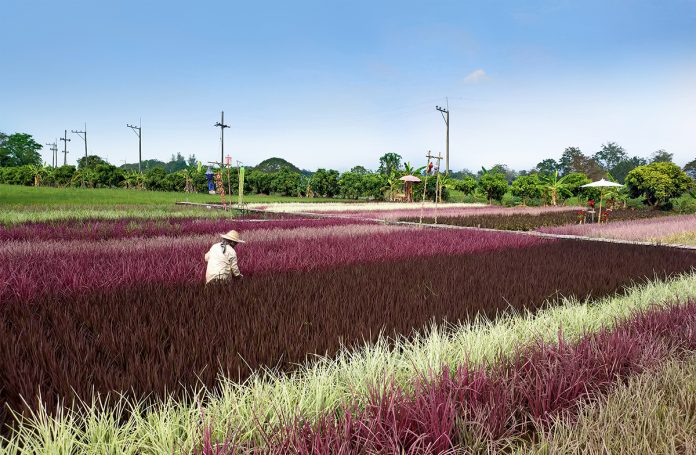
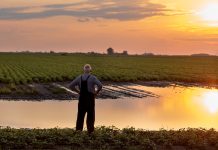
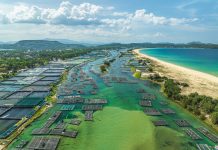
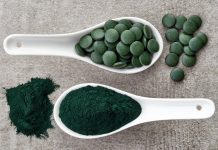
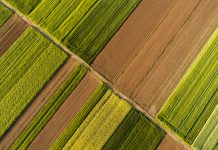
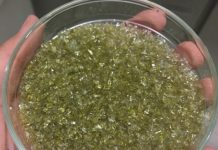
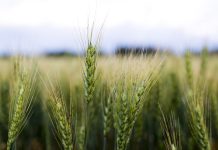




The colorful land gives great pleasure to watch and the information is very helpful. Thank you for sharing the post.